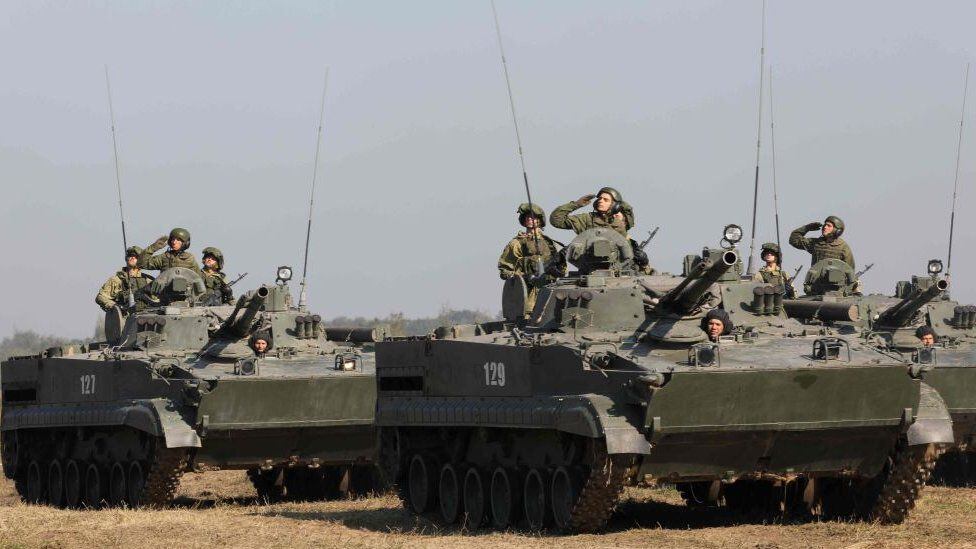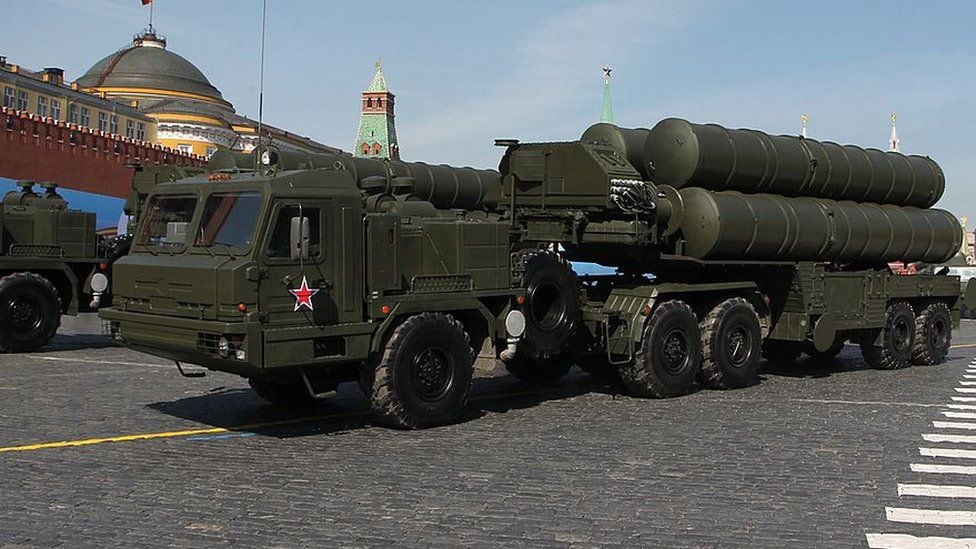After the military invasion of Russia in Ukrainetwo Nordic countries that had been staunchly neutral, Finland and Sweden, reversed their policies and applied to become members of the NATO military alliance.
For some commentators, the decision of Finland and Sweden is a “disaster” for Moscow, which has always seen the expansion of the alliance as a security threat.
LOOK: Who was Peter the Great, the ruthless tsar Putin compares himself to and why does he use him as an example for his war in Ukraine?
But the Russian president, Vladimir Putinsurprised many last May when he said the issue posed “no problem” as long as new NATO members refrain from harboring military infrastructure, especially nuclear weapons, on their territory.
What is clear is that the geostrategic map of the region it will look completely different when Finland and Sweden join NATO.
“The Baltic Sea will effectively become a NATO lake,” Andrey Kortunov, head of the Russian Council for International Affairs, a think tank in Moscow that is affiliated with the Russian Foreign Ministry, recently declared.
Indeed, with Sweden and Finland being NATO members, Russia will retain some 200 km of Baltic coastline.
Y the remaining 90% of the 8,000 km of coastline It will be shared by countries of the alliance: Estonia, Latvia, Lithuania, Poland, Germany, Denmark, Sweden and Finland.
But there, wedged between Poland and Lithuania, is Kaliningrad, an “oblast”: an exclave or administrative region of Russia that does not share any land border with it.
This Russian exclave, with just under a million inhabitants, has become a strategic point of the deepening divisions between the West and Russia.
And some commentators claim that this small territory is crucial both for Moscow’s offensive against Ukraine and for securing its defenses against any hostility from NATO countries.
And there have even been reports that Russia has already deployed nuclear weapons on the territory.
From Koenigsberg to Kaliningrad
Kaliningrad is one of the 46 oblasts that Russia currently has, but it is the only one that does not have a land border with the country.
In addition to its strategic and military importance, Kaliningrad has great historical importance for both Europe and Russia.
The territory’s roots go far back in history and are closely linked to the fate of East Prussia and its capital, Köenigsberg.
The old Königsberg was founded by the Teutonic Knights in 1255, a Catholic crusader of German origin that ruled Prussia.
When East Prussia seceded from Germany after World War I, the territory remained part of Germany until early 1945, at the end of World War II, when it was conquered by the Soviet Red Army.
Then, at the Yalta Conference, its division between Poland and the Soviet Union was agreed upon, which was formalized in Potsdam in 1945.
Its Russian name comes from Mikhail Kalinin, one of the main members of the Bolshevik communist movement and official head of the Soviet Union between 1922 and 1946.
Between Russia and the West
Kaliningrad has the only port on the Baltic Sea that is ice-free throughout the year.
That is why the port city is crucial for both Russia and the Baltic States to ensure transport and trade throughout the region, where temperatures are often below zero for much of the winter.

But apart from transport and trade, Kaliningrad is a strategically vital region for Russia due to its position on the Baltic Sea and its proximity to NATO.
It houses the Russian Baltic Fleet and is positioned as the westernmost territory of Moscow, close to the heart of Europe.
In May, the Baltic Fleet announced that it carried out a series of simulated missile strikes from its nuclear-capable Iskander system.
The Iskander missile system was first introduced to the region in 2016 and then upgraded in 2018, as part of a Russian strategy to counter NATO’s deployment of a ballistic missile defense shield in Europe.
There have also been regular military exercises involving the Baltic Fleet and a series of war games since the invasion of Ukraine.
“Kaliningrad has been a focal point of Russian security concerns since the first wave of NATO enlargement was announced in the 1990s,” Ruth Deyermond, professor of Post-Soviet Security at the Department of Science Studies, tells BBC Mundo. the War of King’s College London.
“Inevitably, in periods when tensions between Russia and NATO are rising, so are concerns about Kaliningrad,” he adds.
Kaliningrad was already heavily militarized for years, but this militarization was reinforced after the Russian annexation of Crimea in 2014.
And the more relations between Russia and the West cool, the military presence of both parties in the region is further strengthened.
“It is not surprising that this area, which is probably the part of Europe with the highest concentration of Russian and NATO forces in close proximity to each other, is now the focus of the greatest security concerns on the part of both sides,” Professor Deyermond said.

Russia does not deny, but does not acknowledge, that it has deployed nuclear weapons in Kaliningrad and has often used vague language about the accusations.
“The deployment of one weapon or another, the deployment of military units, etc. on Russian territory, is an exclusively sovereign matter of the Russian Federation,” Kremlin spokesman Dimitry Peskov said in 2018.
But some top officials, such as the Lithuanian president, say Moscow has already deployed nuclear weapons in the strategic Baltic region.
Some military analysts believe that if NATO were to intervene in the ongoing Ukraine conflict, or if Moscow were to target other former Soviet republics such as Lithuania, Kaliningrad could be a launching pad for a Russian attack on those countries.
But Stefan Wolff, a professor of international security at the University of Birmingham in England, doesn’t think that’s a likely scenario right now.
“I don’t have the feeling that Russia is seriously considering an escalation I don’t even have the resources to do it right now,” the expert tells BBC Mundo.
“However, it is a long-term possibility. Therefore, it would be important to strengthen NATO’s defensive capabilities now to deter any moves by Russia in the future.”
Experts agree that once Sweden and Finland join the alliance, Russia is likely to strengthen its militarization in Kaliningrad.
But this, says King’s College expert Ruth Deyermond, “should probably be understood more as something of a defensive nature: Russia will be protecting its territory from NATO, instead of being a precursor to attacking Poland or the Baltic states.”
It is not known how long the ratification process for the inclusion of Sweden and Finland in NATO may take.
The usual thing is at least one year, but it has been said that in this case, some members, such as the United States, could press to speed up the process.
Meanwhile, experts believe that this heavily militarized territory could become a crucial point for Russia’s offensive against Ukraine.
“It is not crucial yet, but it could become more important if there is an escalation between Russia and NATO or if Russia launches destabilization operations in the Baltic states or in Poland,” says Stefan Wolff.
For Ruth Deyermond the most serious risk is not a deliberate invasion or the intentional use of nuclear weapons.
“The most serious risk in the Baltic is a miscalculation or misunderstanding that causes an escalation that nobody wanted,” says the King’s College expert.
“The region is small, the land doesn’t provide significant natural barriers, and there are a lot of military personnel in close proximity to each other. That provides good conditions for an accident to get out of control.”
“But as long as all parties are aware of this possibility, and I think they are, the risk is manageable,” says the expert.
Source: Elcomercio
I, Ronald Payne, am a journalist and author who dedicated his life to telling the stories that need to be said. I have over 7 years of experience as a reporter and editor, covering everything from politics to business to crime.

:quality(75)/cloudfront-us-east-1.images.arcpublishing.com/elcomercio/GIYTANRNGA3C2MJTKQYDAORSGE.jpg)

:quality(75)/cloudfront-us-east-1.images.arcpublishing.com/elcomercio/ZVZ5SOAA2ZAE5P42JPKUM65ZFI.jpg)



